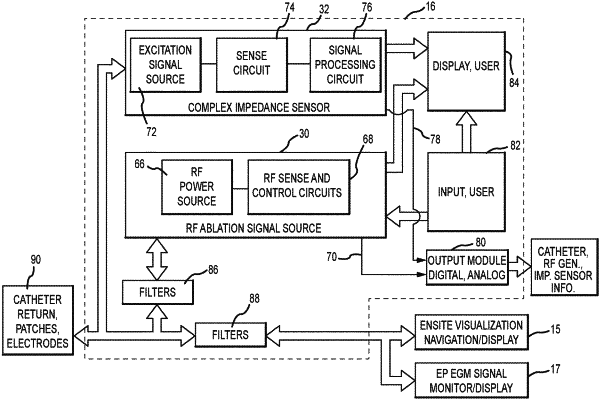| CPC A61B 18/1206 (2013.01) [A61B 18/1492 (2013.01); A61B 2018/00577 (2013.01); A61B 2018/00875 (2013.01); A61B 2018/165 (2013.01)] | 19 Claims |

|
1. An electrophysiology catheter system, comprising:
a catheter having an elongated shaft configured for intra-cardiac use and having a proximal end and a distal end, a first electrode disposed at said distal end, a second electrode proximal of said first electrode, wherein said second electrode comprises a ring electrode, a first sense lead electrically connected to said first electrode and extending through said shaft to said proximal end, and a second sense lead, different from said first sense lead, electrically connected to said second electrode and extending through said shaft to said proximal end;
an excitation signal source coupled to said catheter configured to produce an excitation signal comprising an electrical current proximate said first electrode;
a sense circuit coupled to said first and second electrodes by way of said first and second sense leads configured to measure a response signal induced by said excitation signal as observed across said first and second electrodes; and
a processing circuit configured to process said response signal, based on the excitation signal, to determine an impedance of a cardiac tissue volume proximate said first electrode to treat a cardiac arrhythmia.
|